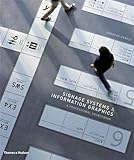Signage systems & information graphics : a professional sourcebook / Andreas Uebele.
By: Uebele, Andreas [author.].
Material type: TextPublisher: London : Thames & Hudson, [2007]Copyright date: ©2007Description: 335 pages : illustrations (some colour), plans ; 30 cm.Content type: text | still image Media type: unmediated Carrier type: volumeISBN: 9780500513798 (hbk.); 0500513791 (hbk.); 9780500288481.Other title: Signage systems and information graphics.Subject(s): Signs and signboards -- Design | Graphic artsDDC classification: 741.6
TextPublisher: London : Thames & Hudson, [2007]Copyright date: ©2007Description: 335 pages : illustrations (some colour), plans ; 30 cm.Content type: text | still image Media type: unmediated Carrier type: volumeISBN: 9780500513798 (hbk.); 0500513791 (hbk.); 9780500288481.Other title: Signage systems and information graphics.Subject(s): Signs and signboards -- Design | Graphic artsDDC classification: 741.6 Translation of: Orientierungssysteme und signaletik.
Includes bibliographical references (page 334) and index.
1. Signage design -- 2. Signage planning -- 3. Signage in practice.
A signage system is much more than just a set of symbols. As well as its practical application, it helps to create an identity for a space and can add decorative flair to any built environment. Andreas Uebele draws on his own design experience to explore signage as a point where graphic design and architecture come together. He first describes the basic rules of signage design: signs must be visible but not distracting, informative but not unwieldy, and concise but not confusing. Striking the right balance is crucial. Color, typography, pictograms, and icons are all elements that can be varied and exploited to encapsulate as much information as possible and fit the job’s requirements: the signage for a hospital, an airport, or a conference center may have little in common, and solutions must be tailored to fit the location. The book showcases great examples of signage design worldwide, with an emphasis on the most original approaches. It is an indispensable reference for communications designers and a must for architects, interior designers, and graphic artists. 250+ color and 250 b/w illustrations and photographs.

